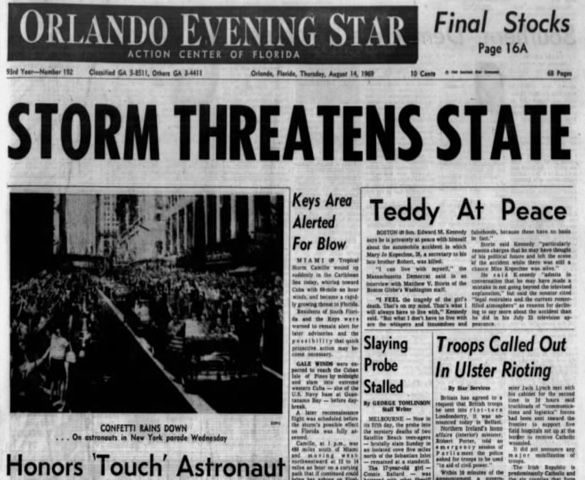A Fateful Week in Weather History From This Week in 1969
Here is a day by day look back at the life of Hurricane Camille, which formed during this week in weather history back in 1969.
On August 14th, Navy reconnaissance dispatched to investigate a tropical wave in the western Caribbean radioed back that the system was already a tropical storm. It was a sign of things to come.
On the morning of Friday, August 15th, Camille became a hurricane. It would cross the western tip of Cuba Friday night and emerge into the southeastern Gulf of Mexico.
On Saturday morning the 16th, the Gulf of Mexico was nervous. At 8 a.m., hurricane watches were posted from Biloxi to St. Marks FL. Hurricane warnings were issued 3 hours later from Fort Walton to St. Marks.
In Miami, NHC Director Robert Simpson was worried. All of the Navy’s planes were working on Project Stormfury, an attempt to weaken Hurricane Debbie by seeding it. Satellite imagery was too primitive to tell Simpson what he needed to know: was Camille strengthening?
He talked the Air Force into sending an aging plane out of Illinois. It would perform an outstanding service, letting the Hurricane Center know that Camille was a monster, with a central pressure of 905 millibars and maximum winds of 160 mph.
Gulf Coast residents hardly slept and the news was not good by Sunday morning. Camille was moving more west than originally thought and warnings were hurriedly shifted westward. By 9 a.m., they were extended to include all of the Mississippi Coast.
By mid afternoon, an Air Force recon plane found the lowest central pressure that had ever been observed by recon, 901 millibars. Winds were 190 mph. The disturbing report may have saved thousands of lives as coastal residents realized Camille would bring unparalleled destruction to the coast.
The center made landfall near Pass Christian MS around 11 p.m. The storm surge was 27 feet above normal and winds were 200 mph. 170 people would die along the coast. Another 153 died in Virginia as the remnants of Camille dumped heavy rainfall that caused mudslides on the night of the 19th.
Robert Simpson said Camille was “the greatest storm of any kind ever to have affected the mainland of the United States.” His pointed comments to Vice President Spiro Agnew would lead to a revamping of the hurricane hunters.
Category: ALL POSTS, Met 101/Weather History


















